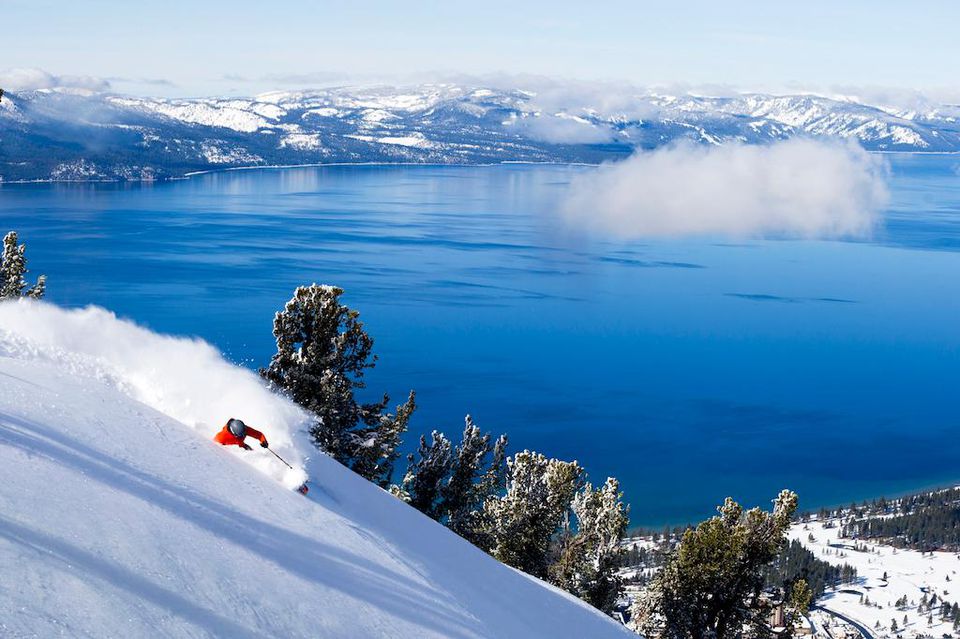Doubling down on protecting Tahoe (Opinion)
Imagine Lake Tahoe with high rises ringing all 72 miles of shoreline and waters that are muddy or gray. This picture is what we might be seeing today if many Lake Tahoe champions had not come together in the late 1960s to form the Tahoe Regional Planning Agency (TRPA). While the “fairest picture the whole earth affords,” as Mark Twain once described Lake Tahoe, still takes our breath away today, the Tahoe Basin is facing new and unprecedented threats.
The clarity of the lake itself is susceptible to changes in and out of the Tahoe Basin, especially during summer months. The annual Lake Tahoe clarity report released by UC Davis Tahoe Environmental Research Center this week indicates that while clarity is holding steady overall and clarity during winter months may be improving, summer clarity is declining. TRPA is working with the Tahoe Science Advisory Council to learn more about the drivers of clarity in the lake and to understand the role factors like extreme weather, warming temperatures, aquatic invasive species, and wildfire smoke are playing. Just as important to this research are continued strategies to restore clarity, which averaged nearly 100 feet when UC Davis researchers began measuring it in the late 1960s. At that time, a city the size of San Francisco, complete with freeways and a bridge over Emerald Bay, was planned for the Tahoe Basin. TRPA’s creation led to protections for sensitive lands, regional environmental standards, and caps on future development.
However, damage had already been done. The lake lost about 1 foot of clarity every year for 30 years before stabilizing in the 2000s. Over the last 20 years, year-round clarity has averaged 69 feet. Scientists have pointed to fine sediment from erosion and polluted stormwater, and algae growth from additional nitrogen and phosphorus entering the lake as the main factors in lost clarity. In 2011, TRPA, state water quality agencies, and local governments adopted the Clarity Challenge, a science-based plan to achieve the 100-foot clarity goal by 2076. The plan calls for property owners, land managers, and local governments to reduce pollutants entering the lake through erosion control projects, stormwater treatment systems, and restoration of wetlands damaged by earlier development.
Despite the mixed trajectory of lake clarity, the Tahoe Basin is meeting or exceeding interim targets for reducing pollutants. Under the Lake Tahoe Environmental Improvement Program (EIP), public and private water quality investments are keeping more than 500,000 pounds of pollutants out of the lake every year, just from urban areas alone. Scientists tell us these reductions are improving water quality, and we need to stay the course while supporting research to better understand the complex drivers of lake clarity.
As with any landscape-scale restoration program, TRPA and our EIP partners can’t do this alone. You can help reduce erosion by staying on trails and parking on pavement instead of road shoulders. If you are a property owner, ensure your property is certified with the required stormwater Best Management Practices (BMPs). Reduce vehicle trips and engine emissions by using bike and pedestrian paths, taking free transit, or carpooling to get around.
I believe wholeheartedly there isn’t a better summer experience anywhere than at Lake Tahoe. With changing conditions around lake clarity, new threats from aquatic invasive species, wildfire, and more extreme weather, preserving that experience takes constant care and vigilance from us all. Whether you are here for one day or have lived in the Tahoe Basin for decades, everyone who loves this special place must work diligently to protect it.
Julie W. Regan is Executive Director of the Tahoe Regional Planning Agency

